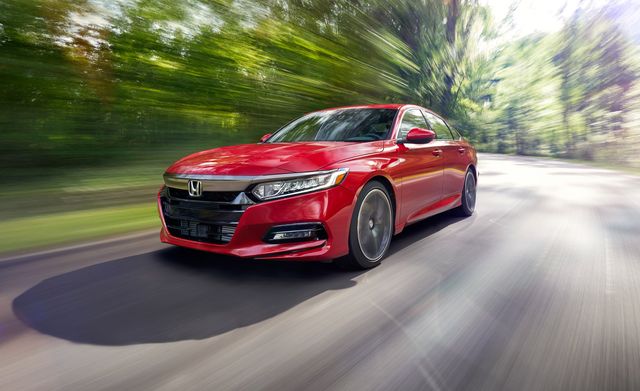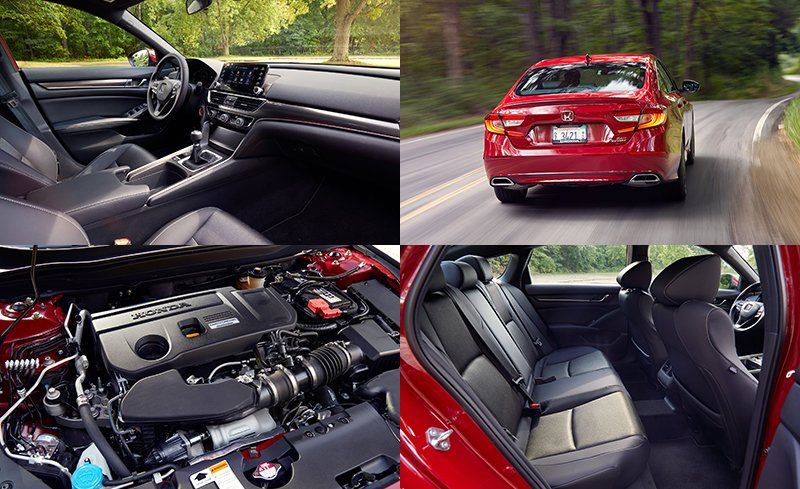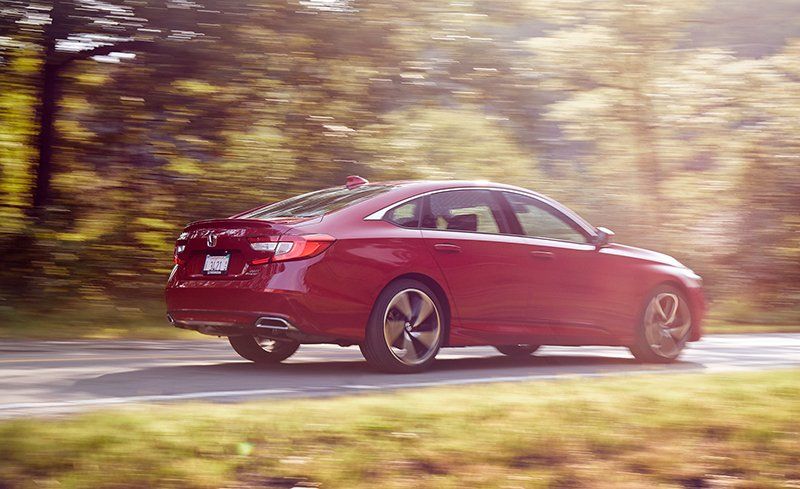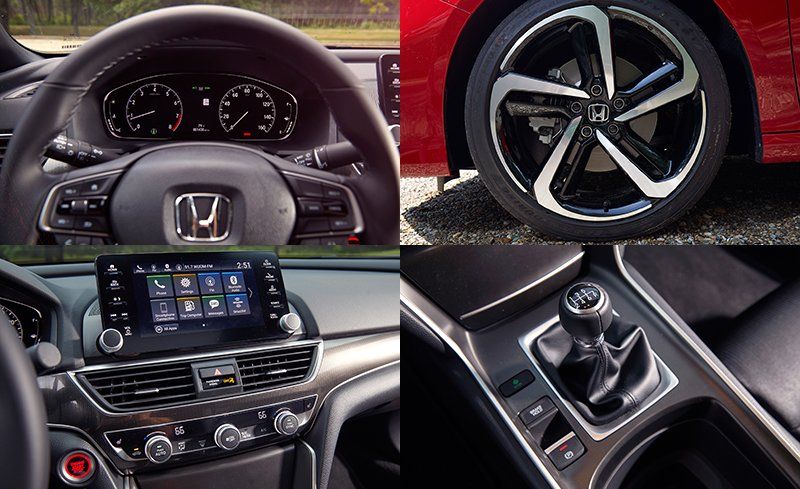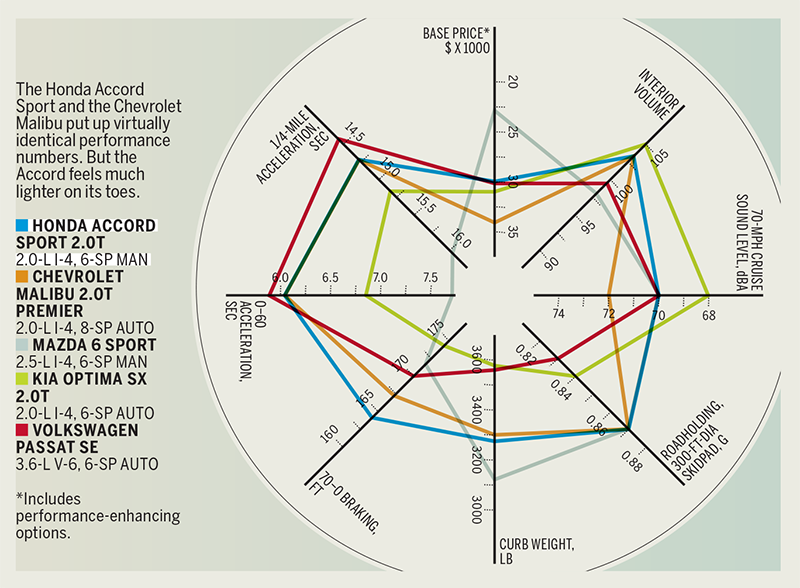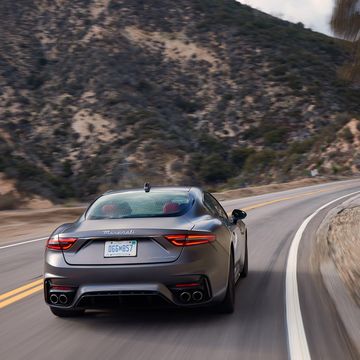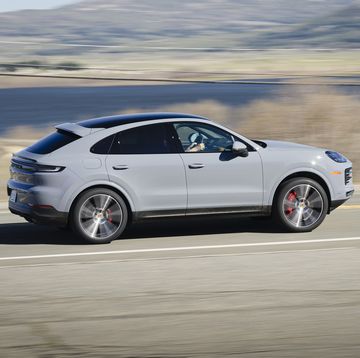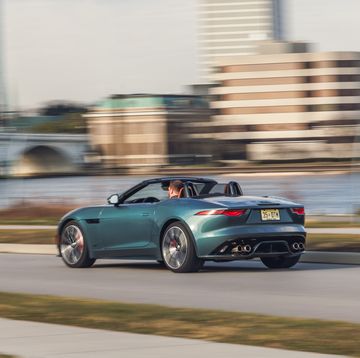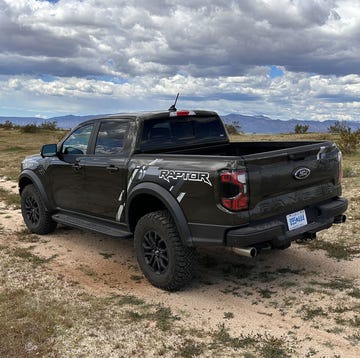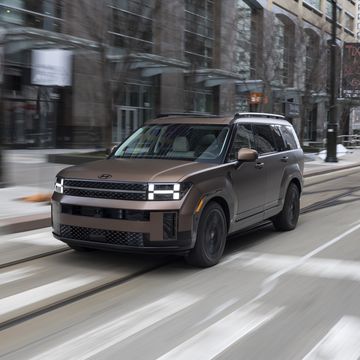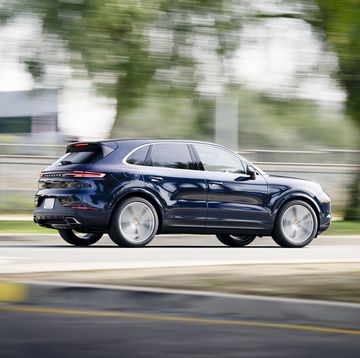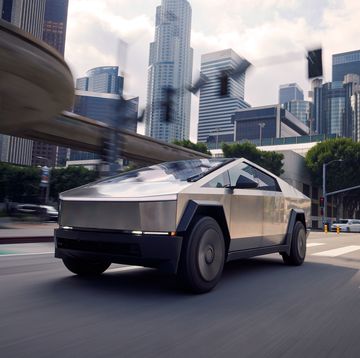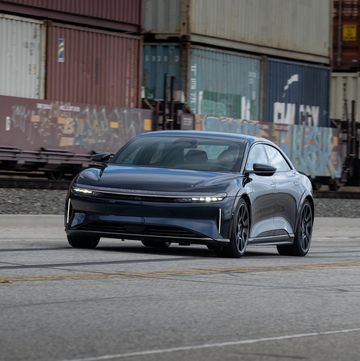From the November 2017 issue of Car and Driver.
Here we are, 17 years after the millennium, creeping toward a driverless future discussed elsewhere in this issue. Robocars will ask very little of us, only that we sit there and wait. After a few years of this, our driving skills are likely to atrophy like leg muscles in a cast. We’ll all become as helpless as Miss Daisy, reliant on a robotic Hoke to drive us around.
Except maybe that’s not what’s going to happen because we just hopped into the cabin of a redesigned 2018 Accord and there’s a manual gearbox with a leather-wrapped knob between the seats. That shifter shouldn’t be there, not this far into the driverless century. It’s almost like finding out that Cadillac offered a hand-cranked starter in 1959. Of course that didn’t happen, but if the robots win and the computer-driven car dominates mobility, this family sedan with a manual will certainly confuse the fossil record.
Naturally, we love it. Partially because a manual family sedan gives us hope that our enthusiasm might have a place in the future, but also because we’ve loved slamming Hondas into gear since the 1980s, and we’d like to continue doing so for at least a few more decades. Slick and precise, this six-speed—available only on Sport trims—provides a mechanical conduit between the car, the driver, and the 252-hp turbocharged 2.0-liter four-cylinder. We recently tested a 2.0T Touring with the 10-speed automatic, which is a no-cost option on the Sport trim. The 2.0-liter is new and closely related to the 306-hp 2.0-liter in the Civic Type R. It replaces the previous generation’s 278-hp 3.5-liter V-6 as the top-spec engine. Moving up to the 2.0-liter from the base 192-hp turbocharged 1.5-liter will require around $2000 to $4500 of your hard-earned grickles, depending on trim level.
The Civic Type R bloodline is deeply felt in the Accord’s new engine. Equipped with Honda’s i-VTEC variable valve lift, the 2.0-liter delivers a rev happiness and linear thrust missing from the 1.5. It rewards you for running right up to the 6800-rpm redline. A hint of turbo lag is unmistakable, but it’s a mere split second before the rush hits. In the Type R, the engine makes no attempt to fit in with polite society. Honda has wisely buried the engine’s more prurient tendencies for family-sedan use. At full throttle, the engine emits only 78 decibels, compared with the Type R’s 91 decibels of Vin Diesel–inspired dialogue.
Pull through the first two gears, and the Accord hits 60 mph in 6.1 seconds; the quarter-mile rolls by in 14.7 seconds at 98 mph in fourth gear. The last V-6 Accord sedan, which came only with a six-speed automatic and weighed 310 pounds more than this wiry 3283-pound Accord, made it to 60 mph in 5.8 seconds and to the quarter-mile mark in 14.4 seconds at 99 mph. The turbo engine’s rush of torque between 1500 and 4000 rpm gives the driver the impression that the new car is quicker than its measurements, but all that output will light up the front tires in first gear. Even with the front end hunting for traction, the steering doesn’t tug and the nose doesn’t spastically vector you into ditches or oncoming traffic; you merely feel as if you’re accelerating on a damp road before traction control steps in.
Cornering grip, at 0.87 g, is strong for a family sedan and is achieved on the Sport model’s 235/40R-19 Goodyear Eagle Touring all-season tires. The Accord is easy to manage near the limit and remains composed, even if the steering efforts through the leather-wrapped rim are a bit light and the electrically assisted gag ensures that its voice is largely muted. Like its predecessor, this Accord is light on its feet and stays flat in corners, and that competence goads you to go ever faster.
Drive it as if you just signed up to be an Uber driver, and you’ll find the ride to be firm enough to be interesting between fares but supple enough to earn you five stars from passengers. The structure is solid, but this latest generation does not seem to have turned down the volume on road and tire noise. The Accord’s 70 decibels at 70 mph is only a single decibel up on the old V-6 model, but it’s enough to keep this sedan from being confused with a luxury car.
Rear-seat space is luxury-car massive, however. Legroom and shoulder room are abundant, even for six-foot-tall adults. The driver’s seat padding is hard, but it starts to feel supportive after a couple of days. And in typical Honda fashion, there’s space for all the accessories of 21st century life. Deep cubbyholes in the center console, under the armrest, and in the doors easily swallow all your phones, charging equipment, iPads, Kindle readers, and Oprah Cinnamon Chai Crème Frappuccinos.
There’s more modern technology perched atop the dashboard, where Honda has wisely upgraded the Accord’s infotainment system. Gone is the previous car’s slow-acting unit whose displays had all the charm of a computer running Windows 95. A new eight-inch screen (a seven-incher is standard on 1.5T and hybrid models) reliably responds to the briefest of taps, the layout is logical, and there are redundant buttons around the perimeter to make even your first attempt at using it easy. With it, Honda has gone from being one of the worst infotainment providers to a class leader. There’s even a dedicated volume knob on the left and a tuning knob on the right, just as RCA and Philco intended.
The rest of the interior holds few surprises. Climate controls are simple, just three knobs with a few logically marked buttons. A convincing digital facsimile of an analog tachometer is set to the left of an actual analog speedometer. It’s possible to change the tachometer display to show trip-computer, audio, and other information, but, this particular car being a manual, we left the tachometer displayed. We do wish that Honda gave drivers the option of putting a digital speedometer in the vast darkness between the two gauges.
Maybe it’s because we’ve been visually assaulted by other new Hondas, such as the Civic and fuel cell-powered Clarity, but we find the new Accord attractive. In front, a broad black grille is topped by a large chrome band that makes it look as if the Accord is wearing a wrestling-championship belt (an acknowledgment of all its past 10Best wins?). Honda’s Intercontinental tag-team belt is flanked by LED headlights that look as if they could’ve come from an Acura and shine brightly at night.
The Accord’s outward appearance may conform to class norms, but Honda isn’t a follower. Offering a manual transmission in the Accord is a protest of sorts, a secret handshake from Honda that lets us know that you shouldn’t have to give up driving just because you’re buying a family sedan. Life may get lost in a repetitive blur of cubicles, choosing paint colors at Home Depot, eating meatballs at Ikea, and picking up the kids from karate. But a manual Accord—a really fun and powerful Accord at that—serves as a reminder of the joy and freedom we used to have as drivers back in the 20th century. Call it an anachronism or an anomaly, but the stick shift belongs to us, those who love driving. We will not give up and let our left legs and right arms wither away. The manual transmission’s therapy is as much mental as it is physical.
Competitors
Specifications
Tony Quiroga is a 20-year-veteran Car and Driver editor, writer, and car reviewer and the 19th editor-in-chief for the magazine since its founding in 1955. He has subscribed to Car and Driver since age six. "Growing up, I read every issue of Car and Driver cover to cover, sometimes three or more times. It's the place I wanted to work since I could read," Quiroga says. He moved from Automobile Magazine to an associate editor position at Car and Driver in 2004. Over the years, he has held nearly every editorial position in print and digital, edited several special issues, and also helped produce C/D's early YouTube efforts. He is also the longest-tenured test driver for Lightning Lap, having lapped Virginia International Raceway's Grand Course more than 2000 times over 12 years.
